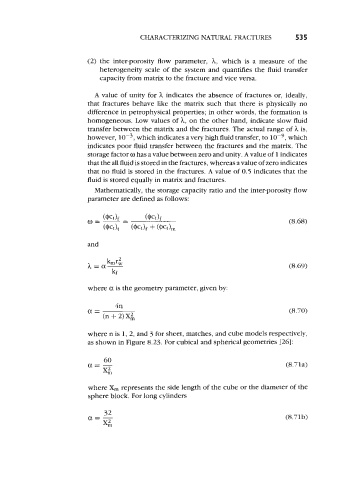Page 568 - Petrophysics
P. 568
CHARACTERIZING NATURAL FRACTURES 535
(2) the inter-porosity flow parameter, h, which is a measure of the
heterogeneity scale of the system and quantifies the fluid transfer
capacity from matrix to the fracture and vice versa.
A value of unity for h indicates the absence of fractures or, ideally,
that fractures behave like the matrix such that there is physically no
difference in petrophysical properties; in other words, the formation is
homogeneous. Low values of h, on the other hand, indicate slow fluid
transfer between the matrix and the fractures. The actual range of h is,
however, lop3, which indicates a very high fluid transfer, to lop9, which
indicates poor fluid transfer between the fractures and the matrix. The
storage factor o has a value between zero and unity. A value of 1 indicates
that the all fluid is stored in the fractures, whereas avalue of zero indicates
that no fluid is stored in the fractures. A value of 0.5 indicates that the
fluid is stored equally in matrix and fractures.
Mathematically, the storage capacity ratio and the inter-porosity flow
parameter are defined as follows:
(8.68)
and
where a is the geometry parameter, given by:
(8.70)
where n is 1, 2, and 3 for sheet, matches, and cube models respectively,
as shown in Figure 8.23. For cubical and spherical geometries [26]:
60
a=- (8.71a)
%
where X, represents the side length of the cube or the diameter of the
sphere block. For long cylinders
32
a=- (8.71b)
%

